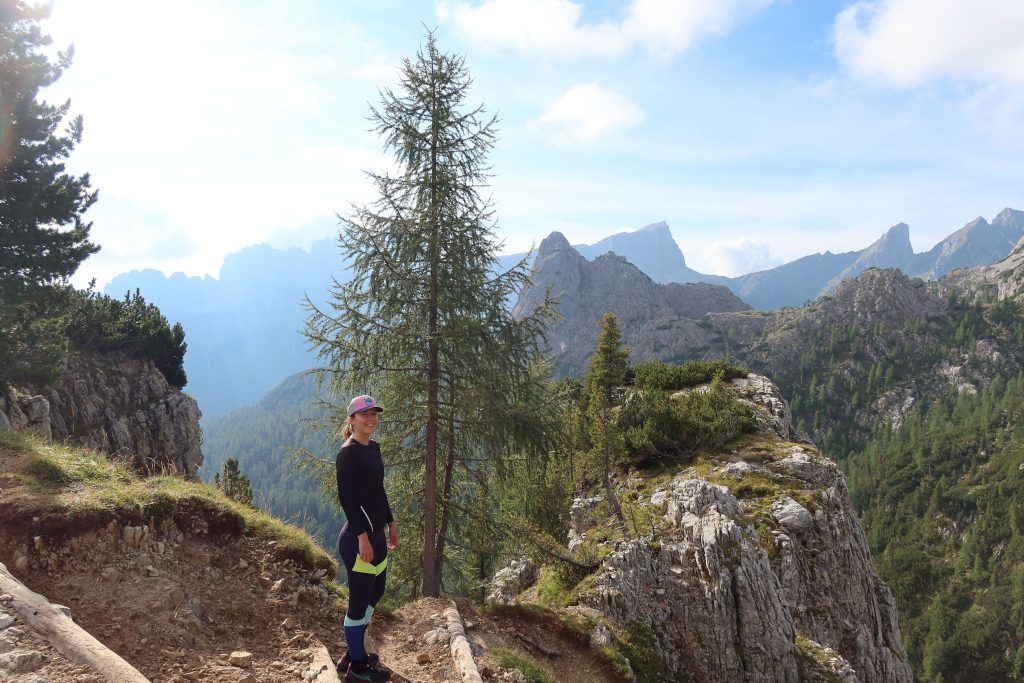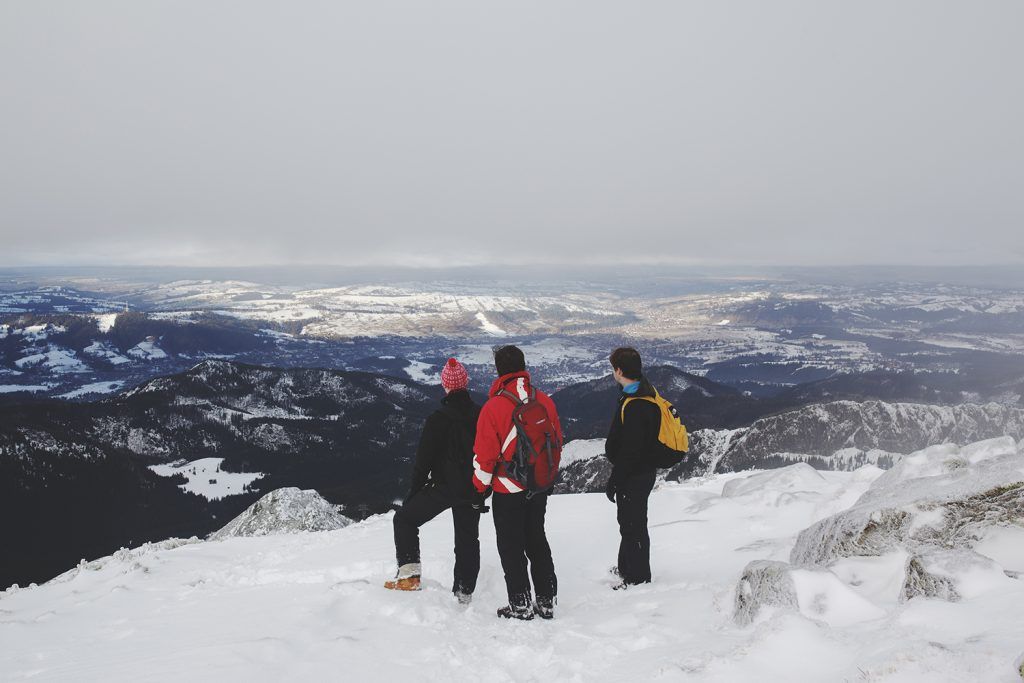Today, we delve deep into the realm of layering—a game-changing technique that will transform your hiking experience. You may be wondering, “What’s the big deal about layering? Can’t I just throw on any old clothes and hit the trail?” Well, the truth is a bit more nuanced. Layering holds the key to unlocking unparalleled comfort, safety, and adaptability during your hiking adventures. It’s like having a hidden ace up your sleeve, ensuring you stay warm, dry, and ready to conquer any weather conditions that come your way.
Key Facts On Layering
- Layering Creates Warmth: Layering is all about trapping air between each garment, creating an insulating barrier that keeps you warm in chilly conditions. By wearing multiple layers, you create pockets of warm air that act as a buffer against the cold. It’s like building a cozy cocoon around your body while still allowing for flexibility and movement.
- The Base Layer is the Foundation: The base layer serves as your second skin, and its primary function is moisture management. Look for base layers made from synthetic materials or merino wool, which wick sweat away from your body, keeping you dry and comfortable. Avoid cotton, as it absorbs moisture and can leave you feeling cold and clammy.
- The Mid-Layer Adds Insulation: The mid-layer is where the magic happens. It provides insulation and helps retain your body heat. Fleece jackets, down vests, or synthetic insulated jackets are excellent choices for the mid-layer. They create a cozy layer of warmth while still allowing breathability to prevent overheating.
- The Outer Layer Shields from the Elements: The outer layer, often a waterproof and windproof shell, is your shield against rain, snow, and gusty winds. Look for jackets made with breathable and durable fabrics, such as Gore-Tex or similar technologies. These materials keep you dry while allowing moisture to escape, preventing that clammy feeling during intense physical activity.
- Accessories: Extending Protection and Comfort Don’t overlook the importance of layering accessories. Hats, gloves, neck gaiters, and socks are essential for maintaining warmth and preventing heat loss from extremities. Choose insulating materials and prioritize moisture-wicking properties to keep your hands, feet, and head comfortable and dry.
- Adaptability is Key: Layering gives you the flexibility to adapt to changing weather conditions and activity levels. If you start to feel too warm, you can shed a layer to prevent overheating. Conversely, if the temperature drops, adding an extra layer or adjusting the zippers and vents on your outer layer can provide added warmth and protection. Listen to your body and make adjustments as needed to find that perfect balance.
Importance of Base Layers
 Base layers act as the foundation of your clothing system, directly in contact with your skin. They serve two primary purposes: moisture management and insulation. By wicking away sweat from your body, base layers keep you dry and prevent discomfort caused by moisture buildup.
Base layers act as the foundation of your clothing system, directly in contact with your skin. They serve two primary purposes: moisture management and insulation. By wicking away sweat from your body, base layers keep you dry and prevent discomfort caused by moisture buildup.
Additionally, base layers provide an additional layer of insulation, trapping warm air close to your skin in cold weather or allowing airflow to cool you down in warm weather.
This helps regulate your body temperature, enhancing both comfort and performance.
Base Layer Materials
Several materials are commonly used for base layers, each offering unique properties.
- Merino Wool: Known for its exceptional temperature regulation, merino wool is a popular choice. It’s naturally moisture-wicking, insulating even when wet, and odor-resistant. Merino wool base layers are highly breathable, making them suitable for a wide range of temperatures.
- Synthetic Fabrics: Materials like polyester and nylon are widely used for base layers. Synthetic fabrics excel in moisture-wicking, quick-drying, and durability. They are often more affordable than merino wool and offer excellent versatility across different weather conditions.
Materials to Avoid
While there is no hard and fast rule, it’s generally recommended to avoid cotton as a base layer material. Cotton tends to retain moisture and dries slowly, leading to discomfort and increased cooling. Instead, prioritize materials that effectively wick moisture away from your skin to keep you dry and comfortable.
Base Layer Types
Base layers come in different types to suit various weather conditions and activity levels. Here are three common base layer types.
- Lightweight: Ideal for warm weather or high-intensity activities, lightweight base layers provide breathability and moisture-wicking capabilities. They offer a thin and comfortable layer that helps regulate body temperature while managing sweat.
- Midweight: Suitable for moderate temperatures, midweight base layers strike a balance between insulation and breathability. They provide more warmth and can be used as standalone layers in milder conditions or as part of a layering system in colder weather.
- Heavyweight: Designed for cold and harsh conditions, heavyweight base layers offer maximum insulation. They provide excellent warmth and are perfect for winter sports, frigid climates, or when spending extended periods outdoors in freezing temperatures.
Middle Layer: Insulation

The primary function of the middle layer is to provide insulation by trapping your body heat and creating a warm microclimate around you. It works in conjunction with the base layer and outer layer to create a layering system that efficiently regulates your body temperature. The insulating layer acts as a buffer, retaining warmth while allowing moisture to escape from the base layer.
Middle Layer Materials
Various materials are used for insulating layers, each with its own unique properties
- Fleece: Fleece is a popular choice for mid-layers due to its excellent insulation-to-weight ratio. It provides warmth, breathability, and moisture-wicking capabilities. Fleece retains its insulating properties even when wet and dries quickly, making it ideal for outdoor activities.
- Synthetic Insulation: Synthetic insulating materials, such as polyester are known for their ability to provide warmth, even in damp conditions. Synthetic insulation is lightweight, quick-drying, and retains its insulation properties when wet. It is a practical choice for those who may encounter wet or humid environments.
- Down: Down insulation is prized for its exceptional warmth-to-weight ratio. It utilizes the natural insulation of down feathers, which trap warm air effectively. Down jackets or vests are lightweight, compressible, and provide excellent warmth in cold conditions. However, it’s important to note that down insulation loses its thermal properties when wet.
Materials to Avoid
Avoid using cotton as an insulating layer as it absorbs and retains moisture, leading to discomfort and increased cooling. Cotton does not provide effective insulation when wet, making it unsuitable for outdoor activities in cold or wet conditions.
Mid-Layer Types
Middle layers come in various types, allowing you to customize your insulation level based on the weather and activity level.
- Lightweight: Lightweight mid-layers offer versatility and are suitable for mild to cool temperatures. They provide a moderate level of insulation without adding excessive bulk.
- Midweight: Midweight options strike a balance between warmth and breathability. They are suitable for cooler conditions and offer increased insulation compared to lightweight layers.
- Heavyweight: Heavyweight mid-layers provide maximum insulation and are designed for frigid temperatures and harsh conditions. They offer excellent warmth and can be used as standalone layers or as part of a layering system in extremely cold weather.
Outer Layer: Rain, Snow and Wind Protection
 The outer layer is your first line of defense against rain, wind, and other harsh elements. It serves to keep you dry by preventing water from penetrating through to your inner layers. Additionally, it acts as a windbreaker, blocking gusts and minimizing heat loss caused by wind chill. The outer layer also provides an extra layer of protection against abrasions, thorns, and other potential hazards you may encounter during outdoor activities.
The outer layer is your first line of defense against rain, wind, and other harsh elements. It serves to keep you dry by preventing water from penetrating through to your inner layers. Additionally, it acts as a windbreaker, blocking gusts and minimizing heat loss caused by wind chill. The outer layer also provides an extra layer of protection against abrasions, thorns, and other potential hazards you may encounter during outdoor activities.
Outer Layer Materials
- Waterproof/Breathable Membranes: Gore-Tex, eVent, and similar membranes are popular choices for waterproof/breathable shells. These membranes have microscopic pores that allow moisture vapor to escape while preventing water droplets from entering.
- Coated Fabrics: Some outer layers feature a waterproof coating applied to the outer fabric. These coatings, such as polyurethane (PU), provide water resistance but may offer less breathability compared to membranes.
Materials to Avoid
Avoid using non-breathable materials like vinyl or rubber, as they trap moisture and can lead to discomfort and excessive sweating. Additionally, materials that lack water resistance or have poor durability should be avoided at all cost.
Outer Layer Types
Outer layers come in different type, allowing you to choose based on the weather conditions and your activity level.
- Lightweight: Lightweight outer layers are ideal for warmer temperatures or high-intensity activities. They provide basic rain and wind protection without adding excessive weight or insulation.
- Heavyweight: Heavyweight outer layers are designed for harsh and cold conditions. They offer maximum protection against rain, wind, and even snow. These shells often feature additional insulation or the ability to accommodate extra layers underneath.
Summer Layering Example Gear
 When it comes to layering, summer may not be the first season that comes to mind. However, layering can still be an effective technique to stay comfortable and protected during your summer outdoor activities.
When it comes to layering, summer may not be the first season that comes to mind. However, layering can still be an effective technique to stay comfortable and protected during your summer outdoor activities.
By choosing the right fabrics, you can create lightweight and breathable layers that shield you from the sun, regulate body temperature, and add a touch of style to your summer adventures. Here’s how to do summer layering right.
- Start with a Lightweight Base: The foundation of your summer layers is a moisture-wicking and breathable base layer. Look for fabrics like lightweight merino wool or synthetic blends specifically designed for hot weather. These base layers will help keep you dry by drawing sweat away from your skin, preventing discomfort and chafing.
- Add a Sun-Protective Layer: In summer, protection from harmful UV rays is crucial. Choose a lightweight, loose-fitting shirt with built-in UPF (Ultraviolet Protection Factor) to shield your skin from the sun’s rays. Long-sleeve options with breathable fabrics like nylon or polyester can provide excellent coverage without sacrificing comfort.
- Consider a Lightweight Mid-Layer: Depending on the weather and activity level, you may want to include a lightweight mid-layer for added versatility. Look for breathable and quick-drying materials like linen or lightweight synthetic fabrics. A lightweight jacket or vest can provide an extra layer of protection against cool breezes or sudden temperature drops in the evening. That tends to happen quite often in the mountains.
- Opt for Breathable Outerwear: If you anticipate rain showers or wind during your summer adventures, choose a packable, waterproof, and breathable outer layer. Look for jackets or ponchos made from lightweight materials with waterproof coatings or membranes like Gore-Tex. These will keep you dry without causing overheating or excessive perspiration.
- Accessorize with Sun Protection: Complete your summer layering with the right accessories. Wear a wide-brimmed hat to shield your face and neck from the sun. Consider lightweight and breathable neck gaiters or buffs that can protect your neck from UV rays while providing additional versatility as a face covering or headband. Don’t forget sunglasses with UV protection and sunscreen to keep your skin safe from harmful sun exposure.
Your Summer Layering Gear Could Look Like This
Rainy Cool Weather Layering Example
 When the skies turn gray in autumn, and raindrops start to fall, don’t let the weather dampen your outdoor spirit. With the right layering strategy, you can stay dry and comfortable even in cool and rainy conditions. So, gear up and learn how to master rainy-weather layering:
When the skies turn gray in autumn, and raindrops start to fall, don’t let the weather dampen your outdoor spirit. With the right layering strategy, you can stay dry and comfortable even in cool and rainy conditions. So, gear up and learn how to master rainy-weather layering:
- Moisture-Wicking Base Layer: start with a moisture-wicking base layer to draw sweat away from your skin and prevent that clammy feeling. Choose synthetic materials or merino wool that excel at moisture management. Avoid cotton as it retains moisture and can leave you feeling chilled.
- Insulating Mid-Layer: In cool and rainy weather, you’ll want an insulating layer that provides warmth without adding bulk. Look for lightweight fleece or synthetic materials that offer excellent warmth-to-weight ratios. These materials retain heat even when damp and dry quickly if they get wet.
- Versatile Shell: Consider adding a windproof and water-resistant shell layer between your base and outer layer. This can be a thin softshell jacket or vest that provides an extra barrier against wind chill and light rain showers. It adds versatility to your layering system and allows you to adapt to changing weather conditions.
- Waterproof Outer Layer: Invest in a high-quality waterproof jacket or raincoat made with a breathable membrane like Gore-Tex. Look for sealed seams and adjustable hoods and cuffs to keep water out effectively. A slightly roomy fit allows for layering underneath while still maintaining freedom of movement.
- Functional Accessories: Don’t forget about accessories to protect your extremities from the rain. Opt for a waterproof hat or cap to shield your head and keep rain off your face. Use waterproof gloves or mittens that offer dexterity and grip while keeping your hands dry. Lastly, wear waterproof footwear or use waterproof shoe covers to keep your feet comfortable and protected.
Your Cool Weather Layering Gear Could Look Like This
Cold Weather Layering Example
 When the temperature drops and frost blankets the ground, it’s time to bring out the power of cold-weather layering. By layering strategically, you can combat the chill, retain body heat, and stay cozy during your winter adventures. So, bundle up and let’s explore the essential layers for braving the cold.
When the temperature drops and frost blankets the ground, it’s time to bring out the power of cold-weather layering. By layering strategically, you can combat the chill, retain body heat, and stay cozy during your winter adventures. So, bundle up and let’s explore the essential layers for braving the cold.
- Base Layer: Start with a moisture-wicking base layer that fits snugly against your skin. Look for thermal or heavyweight fabrics like merino wool or synthetic blends designed to trap warmth while efficiently pulling sweat away from your body. These materials will keep you dry and prevent the uncomfortable feeling of dampness caused by perspiration.
- Insulating Layer: Add an insulating layer to provide extra warmth. Choose materials like fleece, down, or synthetic insulation that offer excellent heat retention. Fleece jackets, down vests, or synthetic-filled mid-layers work well. Ensure your insulating layer has a relaxed fit to allow for air circulation and trapping warm air close to your body. In most cases, you should probably get a fleece and a down jacket.
- Outer Layer: Shielding You from Winter Elements The outer layer is your shield against wind, snow, and freezing rain. Opt for a waterproof and windproof shell jacket made with durable fabrics like Gore-Tex or similar technologies. Look for sealed seams, adjustable hoods, and cuffs to prevent moisture from seeping in. A roomy fit in the outer layer allows you to comfortably accommodate your base and insulating layers without restricting movement.
- Accessories: Protecting Your Extremities Don’t forget about your extremities! Keep your head warm with a beanie or a thermal hat that covers your ears. Invest in quality thermal gloves or mittens that offer insulation and dexterity. Consider layering glove liners underneath for extra warmth. Thick, moisture-wicking socks and waterproof boots are essential to keep your feet dry and protected from the cold ground.
- Face and Neck Protection: Defending Against Frostbite In extremely cold conditions, protect your face and neck from the biting cold and wind. Use a balaclava, neck gaiter, or scarf to cover your nose, mouth, and neck area. Opt for materials that provide insulation while allowing breathability to prevent condensation and discomfort.
Your Cold Weather Layering Gear Could Look Like This
Disclaimer: Winter Layering and Clothing Preparation
It’s important to note that extreme winter layering and clothing preparation should be done in consultation with expert or knowledgeable professionals, especially when venturing into harsh and challenging environments. The specific clothing requirements can vary depending on the location, weather conditions, and individual factors. Seek advice from experienced mountaineers, outdoor guides, or specialists who can provide personalized recommendations based on your destination and the activities you plan to undertake.
They can offer invaluable insights into the appropriate clothing systems, insulation levels, specialized gear, and safety considerations needed for extreme cold weather. Proper layering and equipment selection are crucial for protecting yourself from extreme temperatures, frostbite, hypothermia, and other potential risks associated with severe winter conditions.
Remember, the information provided here is intended to offer general guidance and raise awareness about the concept of layering in cold weather. However, always consult experts and local authorities familiar with the specific environment you’ll be exploring to ensure your safety and well-being. Stay informed, plan meticulously, and enjoy your winter adventures responsibly.

